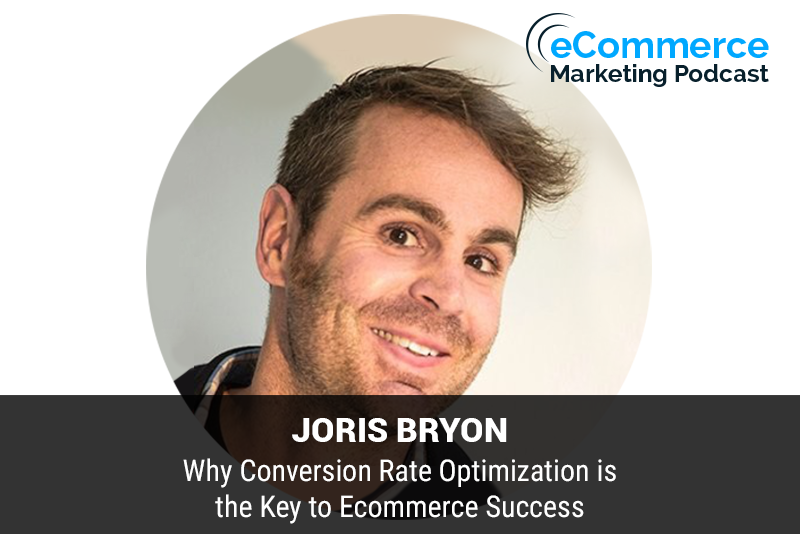
eCommerce Marketing Podcast
The eCommerce Marketing Podcast walks you through everything that goes into ecommerce marketing — from inbound marketing to paid advertising to conversions. Learn the strategies top marketing experts use to grow their businesses.
eCommerce Trends – with David Fletcher
byArlen Robinson
Marketing Strategies Revealed in this Episode:
- What are the eCommerce trends in 2021
- How can businesses prepare for these trends?
- What are some of the practices that should be discontinued / continued to adapt to these trends?
- Businesses that have been successful with their change management to keep up with the latest trends

In this episode of the Ecommerce Marketing Podcast, host Arlen Robinson talks to Joris Bryon, founder and CEO of Dexter Agency, about the intricacies of conversion rate optimization (CRO) for e-commerce businesses. Joris shares insights from his extensive experience and his book “Kill Your Conversion Killers,” providing valuable strategies to boost e-commerce conversions.
Key Takeaways:
- Introduction to Joris Bryon and Dexter Agency (00:00:10)
- Joris’s background in marketing and transition to e-commerce conversion optimization.
- Overview of Dexter Agency and its focus on high-revenue e-commerce stores.
- Importance of Conversion Optimization (00:02:30)
- Definition and significance of conversion optimization beyond just conversion rate.
- Focus on increasing revenue, average order value, and purchase frequency.
- Core Principles of Conversion Optimization (00:05:00)
- Clarity (00:06:00): Ensuring users understand what is being sold.
- Design and Copy (00:07:30): Importance of effective design and persuasive copy.
- Removing Friction (00:09:00): Simplifying forms and processes.
- Building Trust (00:10:00): Using reviews, testimonials, and a strong about page.
- Removing Distractions (00:11:30): Focusing on the most wanted action on each page.
- Balancing SEO and User Experience (00:13:30)
- Importance of meeting user needs while optimizing for search engines.
- Ensuring content answers user queries effectively.
- Essential Tools for Conversion Optimization (00:16:00)
- Google Analytics (00:16:30): For data insights.
- User Testing (00:17:30): Using tools like Userfeel to understand user behavior.
- Hotjar (00:19:00): For heatmaps and user feedback.
- Form Analysis (00:19:30): Tools like Zuko to identify form issues.
- Chat Tools (00:20:00): Intercom and ManyChat for real-time user interaction.
- Site Speed Tools (00:21:00): GTmetrix and Pingdom for site performance.
- A/B Testing Tools (00:21:30): Google Optimize and Convert.com for testing variations.
- Measuring Success in Conversion Optimization (00:23:00)
- Focus on revenue and profit over conversion rate alone.
- Importance of tracking key performance indicators like add-to-cart rates and transaction completions.
- Case Studies and Success Stories (00:25:00)
- Examples of successful e-commerce brands with high conversion rates.
- Importance of brand trust, customer understanding, and catering to specific customer personas.
- AB Testing for Small Traffic Sites (00:28:00)
- Necessity of significant traffic for effective A/B testing.
- Alternative methods like user testing for smaller sites.
Guest Information:
Joris Bryon
- CEO of Dexter Agency
- LinkedIn: Joris Bryon
- Email: [email protected]
- Free Book: Kill Your Conversion Killers











